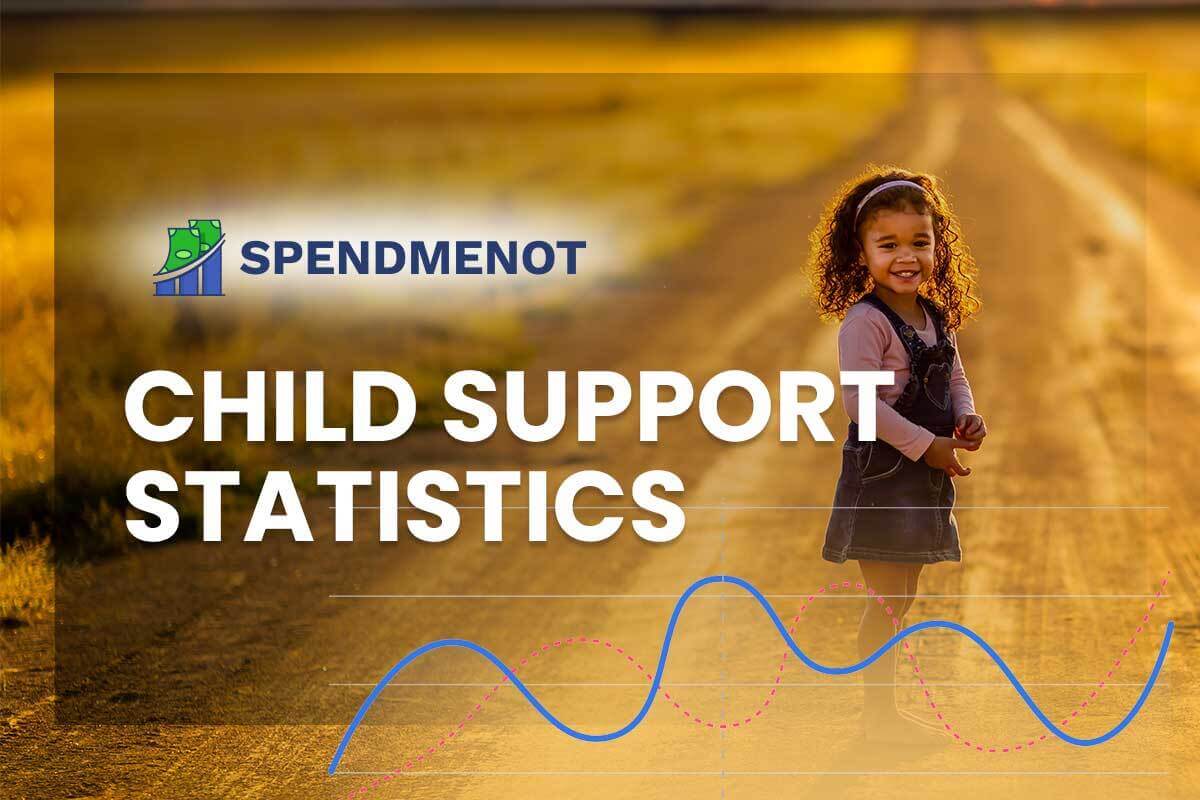19+ Real Estate Statistics Every Buyer and Realtor Must Know in 2023
Last Updated: March 10, 2023
Buying a home is one of the most exciting milestones in life. But it can get overwhelming between finding The One, securing financing, dealing with the complexities of the paperwork, and moving in.
Real estate industry statistics can give you an insight into the constantly shifting housing trends and help you when looking for or selling a house, listing or searching for a rental property, or representing customers in this market.
So we’ve compiled a list of some of the most remarkable US real estate stats.
Fascinating Reals Estate Facts and Stats:
- 51% of buyers found their homes on the internet.
- Six million existing homes were sold in 2021.
- Millennials make up 37% of all home buyers.
- The average house price rose almost 5% in 2021.
- Sales of existing homes will fall 1.7% in 2022.
- The cost of renting has gone up by almost 18%.
What Percentage of Buyers Look for Homes Online?
Years ago, you found a new home by looking at listings in the newspaper, looking out for ‘For Sale’ boards on the street, and going into the office of the local real estate agent. Like most things in life, buying a house has moved online.
Today, there are hundreds of property listing websites, such as Roofstock. You can even see house offers on sites like eBay! And there are entirely online-based estate agents with no physical offices. But just how much has the internet changed the way we buy homes?
1. 97% of home buyers use the internet to search for homes.
(Source: NAR)
Property listing sites have clearly made a big difference in the way we buy houses. The percentage of buyers who look online for homes is rising every year. In 2021, this reached 97%! Even older generations adopt this modern approach, with 87% of those aged 75-95 looking for homes online.
Naturally, for more than 9 in 10 buyers, photos were the most important website feature, followed by detailed information about properties for sale.
2. Over half of buyers found their home on the internet in 2021.
(Source: NAR)
Home buyers statistics from 2021 show that browsing the internet was not just the first step in the house-hunting process. In fact, 51% of buyers purchased a home they viewed online. Meanwhile, only 28% used a real estate agent to find their new home.
3. 88%of all buyers purchased their home through an agent.
(Source: NAR)
No, there’s no contradiction in this fact. See, real estate agent statistics show that while most buyers rely on browsing the internet to find their home, when it comes to sealing a deal, they turn to a professional.
Just around half of all buyers who used a realtor’s help in 2021 contacted an agent to find the right home for them. The rest sought assistance for negotiating the deal terms and purchase price. And the oldest and youngest age groups (22 to 30 and 66 to 95) were more likely to want their agent to help with paperwork.
4. On average, buyers spend eight weeks looking for a home.
(Source: NAR)
One of the interesting real estate facts for buyers is they spend eight weeks looking for houses and look at a median of nine homes. The trend shows the time browsing the market is decreasing.
Could the ease of being able to look at hundreds of property listings online be shortening the length of time it takes to find somewhere to live?
How Many Homes Are Sold in the US Each Year?
The current housing market is in an interesting place. Many first-time buyers are struggling to find the money to buy. The pandemic-induced economic downturn only worsened the home affordability crisis, even with record-low mortgage interest rates. The housing market has also gone global, with many young people now choosing to work remotely and spend some time living abroad. But has this changed the number of houses sold? Real estate statistics from 2021 have something interesting to tell us.
5. 6 million existing homes were sold in 2021.
(Source: NAR)
Existing homes make up the biggest proportion of sales. This means homes that were already built still dominate the market.
However…
6. Newly-built houses accounted for 25-30% of all home sales in 2021.
(Source: Statista)
Recent home buying statistics show that the share of new construction homes sold in the US during 2021 was significantly larger than in previous years. According to experts, this trend could be explained by the fact that fewer people have been putting their homes up for sale during the COVID-19 pandemic. The economic uncertainty accompanying the health crisis also couples with the general increase in homebuilding in the months after the first lockdowns. Hopefully, this could prevent any potential housing shortage.
7. Single-family homes were the most south-after, accounting for 81% of all purchases.
(Source: NAR)
Detached single-family homes reigned in the preferences of buyers among all generations.
Property statistics further show that the typical home recently purchased was 1,900 square feet, had three bedrooms and two bathrooms, and was built in 1993. The size of homes for buyers 41 to 55 years was typically larger at 2,100 square feet, while buyers 66 to 74 commonly purchased the newest homes, with the median home being built in 2000.
Such real estate facts may be useful for sellers and realtors approaching prospective buyers.
8. In 2021, the average house price in the US was $408,800.
(Source: Statista)
After plateauing between 2017 and 2019, real estate prices in the US increased in 2020 and 2021. The average sales price of a new home in 2020 was $389,400, and in 2021, it rose 4.7% to $408,800.
Before you think there’s no way you could afford that, note that the median house prices hovered around $272,500.
Comparing it to the average, the median value is a much more realistic interpretation of the real estate housing market. The problem with the average sale price is that if one or more properties were sold at an extraordinarily high or low price, the average is skewed higher or lower as a result. The median sale price, on the other hand, represents the middle point in the data. Hence it’s closer to what you would likely pay for your new home.
And as it comes to affordability…
9. Americans need an average income of $144,192 to afford a house.
(Source: Real Estate Witch)
This is far more than the median household income of $69,178!
After the pandemic caused housing prices to spike, homes now cost 5.4 times more, on average, than a typical buyer’s gross income. But this decreasing housing affordability
trend has started long before the COVID-19 stroke. After accounting for inflation, home prices have jumped 118% since 1965, while income has only increased by 15%.
Are Millennials Buying Houses?
Millennials are a generation of renters. They rent their homes, stream their music and TV and even rent their clothing sometimes, with businesses popping up to loan out designer accessories and clothing. But are any of them actually buying houses? These millennial home buying statistics might surprise you.
10. Millenials make up 37% of home buyers.
(Source: NAR)
Millennials are buying houses, after all! Many of them are choosing to invest in property instead of sinking money into rent.
Older millennials, those born 1981–1988, accounted for 23% of home buyers in 2021. Almost half of them (48%) bought their first home.
With a 14% share, younger millennials (born 1989–1997) followed. A vast majority of them (82%) were first-time home buyers, statistics show.
At 5%, the smallest segment of home buyers was the silent generation, aged between 75 and 95.
11. 2022 is going to be a peak year for millennial home buying.
(Source: Realtor)
According to Federal Reserve data, generation X held 41.5% of home mortgages in the third quarter of 2021, followed by baby boomers and millennials, both with 27.1%.
But experts forecast a home buyer demographics shift with more than 45 million millennials hitting the prime ages between 26 and 35 for buying their first home in 2022. This glut of millennial buyers will likely keep demand and prices high.
Will the Housing Market Crash in 2022?
The last housing market crash was in 2012. Some experts are now predicting another hard year for the industry. But what’s the real estate forecast for 2022?
12. Sales of existing homes will fall 1.7% from 2021.
(Source: NAR)
While the 2021 housing market performed better than it has in 15 years, with an estimated 6 million existing home sales, this figure is set to dip to 5.9 million in 2022. Experts also forecast housing starts to rise to 1.67 million as the pandemic’s supply-chain backlogs are eased.
13. House prices will increase by around 5% nationally.
(Source: NAR)
Experts predict median home prices will increase by just below 5%, while inflation will rise 4%, both representing slower gains than those seen in 2021.
Is the Market Better for Renters?
Of course, the real estate industry isn’t just about buyers and sellers. Many Americans live in rented properties, and housing data can be quite different from the buyers market. How are things looking for landlords and tenants?
14. The cost of renting rose 17.8% in 2021.
(Source: Apartment List)
Across the US, renting has become more expensive, which is bad news for people looking to hold off on buying a house. As house price increases are slowing down, rental is going through the roof.
This is great if you have a second property that you want to let out or if you’re planning to invest in real estate. The US Census Bureau reports that individual real estate investors own over 74% of rental properties.
15. In 2021, the average rent in San Francisco was $2,850.
(Source: Zumper)
That’s the monthly rent for a one-bedroom property and represents a 7% increase from the previous year. This makes San Francisco the most expensive place in the US to rent a home in the US.
16. New York saw the highest rental prices growth of nearly 33% in 2021.
(Source: Apartment List)
Real estate statistics by state show that New York led the nation in terms of rental price growth. In New York City, the median price for an apartment increased from $1,573 in 2020 to $2,089 in 2021 – a massive jump of 32.8%.
Good news for landlords!
Tampa, Florida and Phoenix, Arizona also saw significant rental demand and increased prices, registering a growth of 33.6% and 29%, respectively.
17. Just 8% of homeowners regret purchasing a home instead of renting.
(Source: Zillow)
Buying a house and becoming a homeowner can be a real culture shock. Paying a mortgage usually works out at a similar price to renting, but owning does come with more costs. If something breaks, you have to pay to get it fixed and can’t just call the landlord.
Despite the challenges of homeowners, it seems the majority of buyers have no regrets about deciding to make the leap from renting.
Is It a Good Time to Be a Realtor?
A realtor is a real estate agent licensed to sell property in their state. Realtor statistics show us that buying and selling properties can be very lucrative, but like all industries, it does come with some challenges.
18. 21% of realtors make between $50,000 and $99,999 a year.
(Source: NAR)
This is the second most popular income bracket for realtors. Those making less than $10,000 a year account for almost a quarter of all professionals. Yet, it’s worth noting that 59% of them are new to the industry, being realtors for less than two years.
It takes time and effort to build up a name in the industry. The best realtors are naturally those following the housing market trends and communicating well with prospective buyers and sellers.
19. The average realtor spends $1,200 a year on transport.
(Source: NAR)
Being a real estate agent can mean a lot of driving around. Whether you’re cruising the neighborhood looking for potential sales, visiting properties you’re hoping to sell, or are heading out to show around potential buyers, realtors spend a lot of time in the car. All this travel soon adds up, and for most real estate agents, it is their biggest business expense.
20. In 2021, agents earned 19% of their business from referrals.
(Source: NAR)
Some 15% of agents managed to get business from returning clients, but most people don’t want to move too often. If you have successfully sold somebody’s house, it’s unlikely that they’ll be needing your services again for a while.
However, referrals are very important for realtors. Hopefully, those homeowners you helped will be telling all their friends that you got them an amazing price for their house, so their friends will want to use your services too.
Wrap Up
The real estate statistics listed above show the housing market was on a wild ride in 2021.
Home sales recovered from the pandemic-hit 2020, but there was stiff buyer competition amid a shortage of existing homes for sale. As a result, demand for rentals surged, and rents went up across the country. This was good news for both landlords and investors.
The commercial property market has also been picking up pace. Investors who bet on real estate investment trusts (REITs) at the beginning of 2021 are in for big returns. If you want to join them, real estate crowdfunding platforms like RealtyMogul are an option, offering a more hands-off property investment approach.
In conclusion, whether a buyer, seller, investor, or realtor, the real estate facts from 2021 are fascinating. We’ll keep an eye on the market to update you on the latest trends. See you around on SpendMeNot.com!










